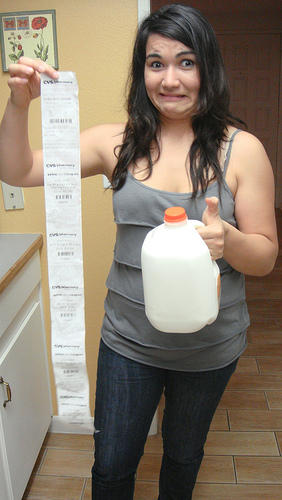The very real concern about those very long CVSreceipts
 Vox's hilarious story
about the ridiculous length of CVS receipts – the height of a small child? the
length of a sofa? – failed to mention one of the more pressing concerns about
being handed a ream of thermal-sensitive paper upon checkout: Exposure to
bisphenol-A, or BPA.
Vox's hilarious story
about the ridiculous length of CVS receipts – the height of a small child? the
length of a sofa? – failed to mention one of the more pressing concerns about
being handed a ream of thermal-sensitive paper upon checkout: Exposure to
bisphenol-A, or BPA.
Most receipt paper is
imprinted with BPA. When heat is applied, it bonds with a clear dye coating the
paper, turning the dye dark (You can see this vividly in the Vox story, where the
author ironed a CVS receipt to better measure its length and the receipt turned
black).
Abundant science shows that the chemical – an endocrine disruptor shown in lab tests to disrupt metabolism, reproductive and immune systems – easily migrates from paper to skin.
Abundant science shows that the chemical – an endocrine disruptor shown in lab tests to disrupt metabolism, reproductive and immune systems – easily migrates from paper to skin.
A 2012 study estimated
that 88 percent of our exposure to BPS, a close cousin to BPA, comes via
handling receipts. And scientists have concluded that we all have trace amounts
of BPA and/or its cousins, BPS and BPZ, among others, in our bodies.
In January, editor Brian Bienkowski wrote about a study in Michigan that found 93 percent of all paper receipts contained hormane-altering chemicals.
And last month Chemical and Engineering News reported that elevated levels of BPA picked up from receipts can linger in the body for a week or more.
Which makes us suggest
that there's got to be a better way for CVS to get coupons and alerts into the
hands of its customers.
Read the, ahem, lengthy story on CVS's receipts on
Vox here.